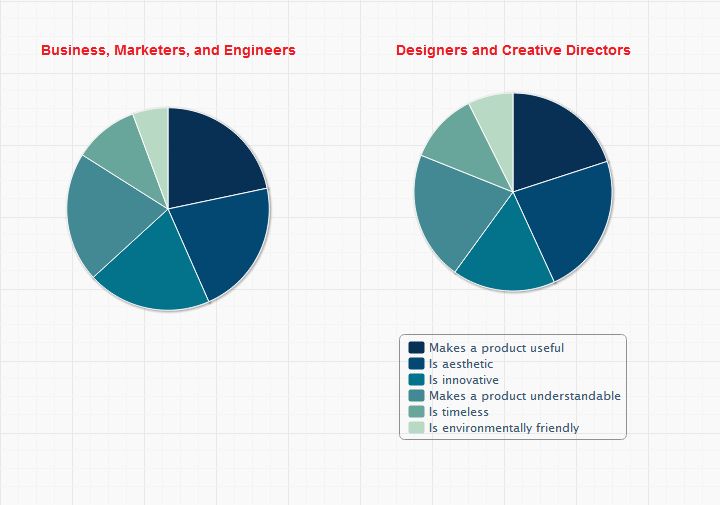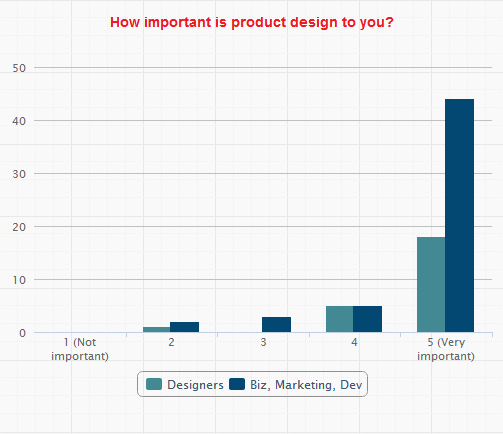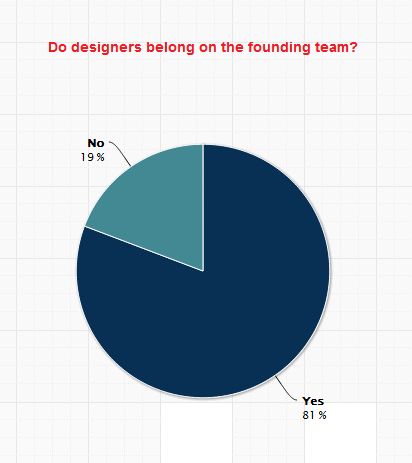Web Design Features for Startups
- Transfer
Design for startups can often be compared with off-road. For an inexperienced designer, the process can be quite thorny if he did not prepare for it in advance.
Fortunately, startupers themselves realize that design is an integral component of a growth strategy, so high-quality design is becoming more and more in demand today. More and more startupers realize that good design is not only a color palette and caramel buttons. Design affects communication with the audience, sales, competitiveness and, as a consequence, the growth of the company.
You cannot ignore design when there are companies like Apple. Already, many startups, Path, Airbnb, Square, Massive Health, make design the core of their business and get phenomenal results. But what is the design really? Logo? WordPress theme? Innovative interface? Design is much more than all of the above. Design is a way of thinking. This is an approach to the problem. It's about how to kick ass competitors.
Designer Wels Riley wrote a great research article about design for startups . In his article, Riley tried to combine the vision of design with startups and designers who develop sites for them. But, before starting the study, Riley listed, in his opinion, those key qualities of design that meet its true purpose.
Innovation . Opportunities for innovation will never be exhausted. New technologies open up new possibilities for innovative design. Innovative design is always developed in tandem with innovative technologies and can never be an end in itself.
Utility. For a product to be useful, it must meet certain criteria: functional, psychological, aesthetic. Good design emphasizes the usefulness of the product.
Aesthetics . Aesthetic qualities of the product are an integral part of the utility. The products we use every day affect us and our lives. Only a well-designed product can be beautiful.
Clearness . Design clarifies the product design. It allows the product to tell about itself. A product with a good design does not need instructions, it is "self-explanatory".
Unobtrusiveness. Design is not art or decoration skill. Design is a tool for solving certain problems. It should be neutral and restrained in order to leave users the opportunity to express themselves.
Sincerity . Design does not create the appearance that the product is more innovative, powerful or valuable than it really is. He does not try to manipulate users and does not make promises that he cannot keep.
Timelessness . Good design avoids being fashionable and therefore never will be old-fashioned. Unlike fashion, such a design lives for many years, even in our one-time society.
Thoroughness. There can be no random things in design and something left to chance. Caring and accuracy in the design process demonstrate respect for consumers.
Environmental friendliness . Design makes a major contribution to environmental protection. It conserves resources and minimizes physical and visual pollution throughout the life of the product.
Minimalism . Better less, but better. Good design concentrates the user's attention on the fundamental aspects of the product, and does not burden him with irrelevant details. Cleaner, easier.
In order to answer this question, Riley interviewed 78 directors, marketers and designers. The survey showed that both sides of the design process see the design approximately the same. The most important quality for both groups is aesthetics. In second place is the ability of design to emphasize the beneficial properties of the product. Closes the three leaders of innovation.

Good quality design is rooted in startup culture. It seems like a lot of people are ready for change. Not only do many entrepreneurs, developers and engineers see real opportunities to improve their product through design, they are also pretty much sure that the designer should be a full member of the team. Design is becoming a key competitive advantage, allowing you to receive funding, press attention and audience loyalty.

For many years, a pair of co-founders consisted of an executive director and an engineer. It worked for Facebook, Apple, Microsoft and many others. Nowadays, excellent designers work in these companies because it is a necessity that they cannot ignore. It seems that the design is really becoming more and more significant in startups.

However, not everything is so rosy. To successfully work with startups, the designer must take into account the specifics of this business. The main difficulties of working with startups are listed below.
The goals and objectives of the work can change daily, so special attention should be paid to a clear schedule of work and the same clear description of remuneration. If the task is written anyhow, then you have every chance to spend much more time on the project than you expected, but get exactly as much money as you asked.
Describe in detail your responsibilities and work schedules, and also include in the contract the conditions determining the remuneration for any additional work that goes beyond the scope of the initial tasks.
Note: Of course, this applies to any project, but in the case of a startup, increased attention to agreements is especially important due to the messy activities of young businesses.
Design for startups requires stress resistance from the designer. Startups are constantly faced with some difficulties, so they are characterized by erratic business processes. These are growth diseases that a designer will have to put up with if he wants to work with startups. Your ability to remain calm in all situations works to your advantage and your reputation.
One of the tasks of creating an effective design for a startup is to create a clear portrait of the user. You need to fetch as much information as possible from the client, even if he does not fully understand who he is creating the site or application for.
You must imagine the audience, even if it is fictitious. You must predict the behavior of users on the site. All your knowledge about the audience’s properties should be applied in the design, thereby increasing the conversion of the site.
Do not be afraid to share your ideas about the audience with the client. Thus, you not only prove yourself as an expert, but also help your design become more effective, since this information is key to the success of the site.
When I start working with a client, I ask him to fill out a questionnaire. The questionnaire is designed in such a way as to get as much information as possible from the client about the target audience. Without this information, my design will be meaningless, because I can not awaken the necessary emotions and keep the user on the site.
In order to keep the user on the site you need to literally get into his head and find out what drives him. What are his habits? Needs? Worries? Problems? Understanding the target audience gives you an advantage and allows you to develop a highly conversion design that does not contradict the vision of the owner.
Tell us about your design experience for startups and about your vision of the key qualities of effective design.
Literary translation: the meaning is the same, but in places in completely different words. Firstly, I myself am a designer and a startup, the topic is close to me, so I allowed myself all sorts of copyright liberties. Secondly, although in general the article is interesting and correct, in some places the author clearly helped with the "cap". Such places are either cut out or tried to cut. Thirdly, half of the original article was not entirely original. The author in his own words retells the promo-site-article-study of Vela Riley . Unfortunately, during the verification it turned out that the girl’s own words turned out to be much worse than Riley’s, so I took the text about the key design qualities from the original source.
Fortunately, startupers themselves realize that design is an integral component of a growth strategy, so high-quality design is becoming more and more in demand today. More and more startupers realize that good design is not only a color palette and caramel buttons. Design affects communication with the audience, sales, competitiveness and, as a consequence, the growth of the company.
You cannot ignore design when there are companies like Apple. Already, many startups, Path, Airbnb, Square, Massive Health, make design the core of their business and get phenomenal results. But what is the design really? Logo? WordPress theme? Innovative interface? Design is much more than all of the above. Design is a way of thinking. This is an approach to the problem. It's about how to kick ass competitors.
Key design qualities
Designer Wels Riley wrote a great research article about design for startups . In his article, Riley tried to combine the vision of design with startups and designers who develop sites for them. But, before starting the study, Riley listed, in his opinion, those key qualities of design that meet its true purpose.
Innovation . Opportunities for innovation will never be exhausted. New technologies open up new possibilities for innovative design. Innovative design is always developed in tandem with innovative technologies and can never be an end in itself.
Utility. For a product to be useful, it must meet certain criteria: functional, psychological, aesthetic. Good design emphasizes the usefulness of the product.
Aesthetics . Aesthetic qualities of the product are an integral part of the utility. The products we use every day affect us and our lives. Only a well-designed product can be beautiful.
Clearness . Design clarifies the product design. It allows the product to tell about itself. A product with a good design does not need instructions, it is "self-explanatory".
Unobtrusiveness. Design is not art or decoration skill. Design is a tool for solving certain problems. It should be neutral and restrained in order to leave users the opportunity to express themselves.
Sincerity . Design does not create the appearance that the product is more innovative, powerful or valuable than it really is. He does not try to manipulate users and does not make promises that he cannot keep.
Timelessness . Good design avoids being fashionable and therefore never will be old-fashioned. Unlike fashion, such a design lives for many years, even in our one-time society.
Thoroughness. There can be no random things in design and something left to chance. Caring and accuracy in the design process demonstrate respect for consumers.
Environmental friendliness . Design makes a major contribution to environmental protection. It conserves resources and minimizes physical and visual pollution throughout the life of the product.
Minimalism . Better less, but better. Good design concentrates the user's attention on the fundamental aspects of the product, and does not burden him with irrelevant details. Cleaner, easier.
What design qualities are most important for startups?
In order to answer this question, Riley interviewed 78 directors, marketers and designers. The survey showed that both sides of the design process see the design approximately the same. The most important quality for both groups is aesthetics. In second place is the ability of design to emphasize the beneficial properties of the product. Closes the three leaders of innovation.

Good quality design is rooted in startup culture. It seems like a lot of people are ready for change. Not only do many entrepreneurs, developers and engineers see real opportunities to improve their product through design, they are also pretty much sure that the designer should be a full member of the team. Design is becoming a key competitive advantage, allowing you to receive funding, press attention and audience loyalty.

For many years, a pair of co-founders consisted of an executive director and an engineer. It worked for Facebook, Apple, Microsoft and many others. Nowadays, excellent designers work in these companies because it is a necessity that they cannot ignore. It seems that the design is really becoming more and more significant in startups.

How should a designer build a relationship with a startup?
However, not everything is so rosy. To successfully work with startups, the designer must take into account the specifics of this business. The main difficulties of working with startups are listed below.
Quick changes
The goals and objectives of the work can change daily, so special attention should be paid to a clear schedule of work and the same clear description of remuneration. If the task is written anyhow, then you have every chance to spend much more time on the project than you expected, but get exactly as much money as you asked.
Describe in detail your responsibilities and work schedules, and also include in the contract the conditions determining the remuneration for any additional work that goes beyond the scope of the initial tasks.
Note: Of course, this applies to any project, but in the case of a startup, increased attention to agreements is especially important due to the messy activities of young businesses.
Clutter in business processes
Design for startups requires stress resistance from the designer. Startups are constantly faced with some difficulties, so they are characterized by erratic business processes. These are growth diseases that a designer will have to put up with if he wants to work with startups. Your ability to remain calm in all situations works to your advantage and your reputation.
Vague ideas about the audience
One of the tasks of creating an effective design for a startup is to create a clear portrait of the user. You need to fetch as much information as possible from the client, even if he does not fully understand who he is creating the site or application for.
You must imagine the audience, even if it is fictitious. You must predict the behavior of users on the site. All your knowledge about the audience’s properties should be applied in the design, thereby increasing the conversion of the site.
Do not be afraid to share your ideas about the audience with the client. Thus, you not only prove yourself as an expert, but also help your design become more effective, since this information is key to the success of the site.
When I start working with a client, I ask him to fill out a questionnaire. The questionnaire is designed in such a way as to get as much information as possible from the client about the target audience. Without this information, my design will be meaningless, because I can not awaken the necessary emotions and keep the user on the site.
In order to keep the user on the site you need to literally get into his head and find out what drives him. What are his habits? Needs? Worries? Problems? Understanding the target audience gives you an advantage and allows you to develop a highly conversion design that does not contradict the vision of the owner.
Thanks for attention!
Tell us about your design experience for startups and about your vision of the key qualities of effective design.
From translator
Literary translation: the meaning is the same, but in places in completely different words. Firstly, I myself am a designer and a startup, the topic is close to me, so I allowed myself all sorts of copyright liberties. Secondly, although in general the article is interesting and correct, in some places the author clearly helped with the "cap". Such places are either cut out or tried to cut. Thirdly, half of the original article was not entirely original. The author in his own words retells the promo-site-article-study of Vela Riley . Unfortunately, during the verification it turned out that the girl’s own words turned out to be much worse than Riley’s, so I took the text about the key design qualities from the original source.
